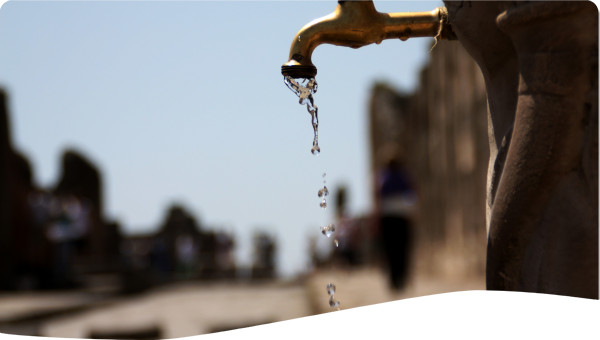To increase agricultural productivity, the Ministry of Agriculture and Irrigation has encouraged farmers to organise water users groups to manage water courses and abstractions. This case study describes the problems encountered as well as the solutions found, among them a system of water licenses, issued to each farmer and also used to calculate charges.
Myanmar has good potential for agricultural growth with its abundant land and water resources. The average farm size is about 5 acres, which is relatively high for the region, and the average water availability of over 20,000 m3 per capita is much higher than the Asian average of 4,000 m3 per capita. However, the average annual rainfall in the Central Dry Zone (CDZ), where 25% of the population live, is just 30 inches with a pronounced dry season and negligible rainfall for six months of the year. This makes irrigation essential even for securing a good monsoon season crop as well as for growing a dry season crop.
Despite the abundant water resources, the topography limits access to water for most parts of the country and the CDZ is only able to access small tributary stream rather than the main rivers. Irrigation, drainage and flood management infrastructure is thus indispensable for ensuring farm productivity. The watercourse water user group farmers do not want to be the group leaders of farmers belonging to their tertiary canals because they cannot perceive any direct benefits for the hard work involved with dealing with the general affairs of the watercourse.
Water user groups at the township and the secondary canal level face the difficulties of having appropriate information exchange, inefficient supply and use of irrigation water in watercourse irrigable areas, and maintenance of terminal facilities such as watercourses and field channels.
The Ministry of Agriculture and Irrigation has encouraged many farmers to organize water users groups for the irrigation projects as part of a pilot programme. The aim is for higher agricultural productivity and yield through the collaborative and efficient participation of beneficiary farmers engaged in irrigation. This is being achieved by reducing water losses, extending the equal and efficient irrigation and increase the cropping intensity and yield.
Now the Irrigation Department wants to extend the water user groups to cover every watercourse irrigation system throughout the country. In the new system the group leaders will be nominated by the farmers, following elections among the beneficiary farmers of the watercourse, and then approved by the Divisional Canal Officer.
Both of the leaders and the beneficiary farmers are satisfied with the water licensing system to help organise irrigation. Farmers, water users’ groups at the secondary canal level or tertiary canal level, and Irrigation staff have open access to information, and enjoy equal and efficient water distribution in throughout the managed watercourse.
Farmers can irrigate according to a proper irrigation and operation plan and get the irrigation water to their plot smoothly. Finally they can reduce their working hours in their paddy fields and waste of irrigation water through proper irrigation management is reduced.
Both of the leaders and the beneficiary farmers are satisfied with the water licensing system to help organise irrigation. Farmers, water user groups at the secondary canal level or tertiary canal level, and Irrigation staff have open access to information, and enjoy equal and efficient water distribution in throughout the managed watercourse. Farmers can irrigate according to a proper irrigation and operation plan and get the irrigation water to their plot smoothly.
Finally they can reduce their working hours in their paddy fields and waste of irrigation water through proper irrigation management is reduced. Now, most of the irrigation systems in Myanmar have water user groups at different levels especially in dry zone area projects. Strengthening of water user groups enhances the active and efficient participation of farmers, in order to establish a successful water management system for sustainable development.
It is a good example of the application of some of the principles of IWRM and could be used for first step in sustainable institution of water management.
Proper strengthening of the watercourse water user groups is very important, in order to have equal and efficient irrigation to each and every paddy plot.
It can be done through the monitoring and evaluation of the activities and functions, as a way for appropriate strengthening of their activities and functions for the purpose of establishing of strong leadership and management system.
The strengthening of the watercourse water user group in Myothit Township, Magwe Division is a good example and it should be extended to other areas and irrigation projects.
 Case studies
Case studies


